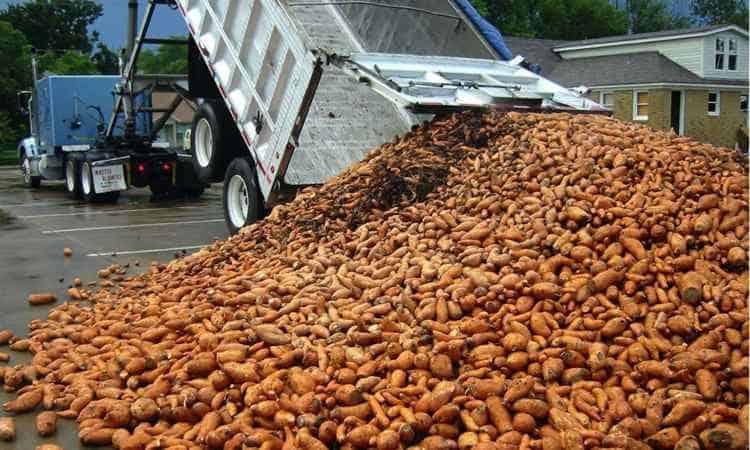At a recent forum held by the Farm Journal, professionals from many agriculture-related businesses came together to discuss innovations in agriculture that could help answer this critical question: How are we going to feed the world in 2050 when our population rises to over 9 billion? Add in the fact that 1 in 6 Americans are currently food insecure, and this problem may seem even more daunting. There were many impressive technological solutions put on the table from leading agricultural innovators. There was, however, one largely untapped opportunity—40 pecent of America’s edible food goes to waste every year, with a similar amount globally.
This food waste also takes an unbelievable toll on the environment. It accounts for 25 percent of America’s freshwater use, over 20 percent of methane gas emissions and 300 million barrels of oil every year. In fact, as author Jonathan Bloom said at the first-ever Food Waste & Hunger Summit, if food waste was its own country, it would have the third highest greenhouse gas emissions in the world behind the U.S. and China.
Fortunately, we can make a tremendous impact on both of these issues with the untapped power of food recovery. If the U.S. alone reduced food waste by only 15 percent, the Natural Resources Defense Council (NRDC) estimates that we can cut hunger in half. So, why is so much food going to waste at the institutional level? Primarily, it’s inertia and misplaced fear within the food industry. The floodgates of food recovery have been closed by managers out of fear of not being able to donate the food safely, fear of being sued, or fear of added costs. It is very feasible to donate surplus food while upholding all food safety guidelines, and there is a federal law protecting all good faith donors from liability called the Bill Emerson Good Samaritan Food Donation Act.
Moreover, almost all businesses that recover their surplus food report saving money. For-profits are eligible to take advantage of a tax deduction for up to twice the normal costs of goods sold write-off. To top it off, businesses participating in food recovery boost employee morale. Blogger Taylor Ashbrook documents traumatic experiences of being forced by Trader Joe’s management to toss out surplus food in her blog and upcoming book, CHECK OUT GIRL. In short, participating in food recovery is best for every business that cares about its bottom line.
Food Recovery Network is working to leverage the momentum created by our student movement in order to ignite a shift in America’s food industry from food waste to food recovery with the launch of Food Recovery Certified. This is the first and only national program to certify food businesses that give their surplus food to hungry people. Our aim is to recognize them for doing the right thing and to create a standard for others to emulate. Two of those businesses are Bon Appetit Management Company and Sodexo, which are both Founding Partners in Food Recovery Certified. Together, they have hundreds of locations across the country donating their surplus food to people in need and are devoting significant resources into increasing their food recoveries.
Restaurants, caterers, farms and other food businesses that recover their surplus food regularly to people in need in their community can apply online at foodrecoverycertified.org. Certified businesses receive a window sticker and a digital copy to advertise their participation. When customers know a business is doing its part, they feel good about shopping there and want to go back more often.
Food Recovery Certified, however, will only be successful if you, the consumer, demand it from your favorite food businesses. Just send them a link to our website or recent video and ask them to do their part in the fight against hunger and climate change.
So how are we going to feed the world in 2050? The same way we can in 2014: by making sure our surplus food feeds people, not landfills.












